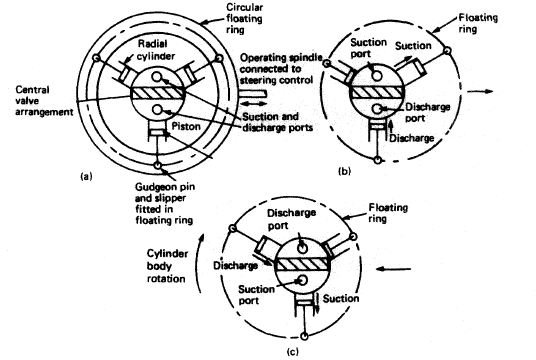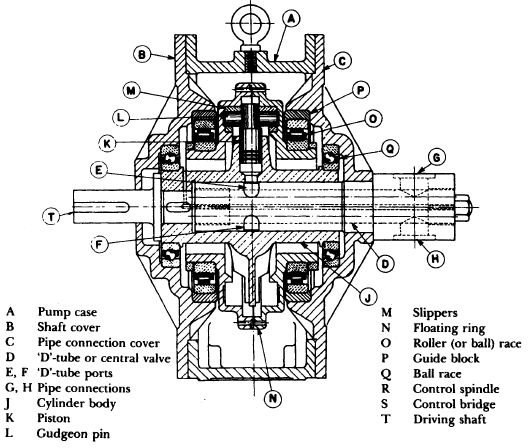Understanding Hele Shaw Pumps - Construction, Working and Uses
Introduction
A variable delivery pump is generally used in applications, which require constant variation in the amount of oil that is to be supplied. Different designs of variable displacement pumps are available in the market. The principle behind any type of variable displacement pump is to alter the pump stroke in order to vary the amount of oil displaced, according to the requirement. Two main parts of the variable delivery pump are - floating ring , swash plate or a slippery pad.
Construction
The variable pump assembly,also known as radial cylinder Hele Shaw pump, consists of a short shaft, which is attached to a cylindrical body that rotates inside the casing. The cylindrical body surrounds a central valve and has ball bearings at the ends. The central valve and the cylindrical ports are connected to each other by means of ports, which open in the outer casing from where the oil is supplied and delivered. All the cylinder bodies have pistons inside and are fastened to the slippers by means of gudgeon pin. All these slippers are located inside slots made in the circular floating ring, which can also rotate in any directions because of the bearings mounted in the guide blocks. Two spindles control the movement of the ring and comes out of the casing though the slots provided.
Working
The operation of the pump, though a bit complex, is an interesting one. As shown in the figure, the circular ring, which accommodates the slippers is concentric with the central valve arrangement . Due to this, the piston doesn’t have any relative reciprocating motion inside the cylinder. No oil is pumped or sucked in and although the pump is rotating no fluid is delivered, during this state. But this is only until the arrangement is concentric. As soon as the circular floating ring is pulled to the right the pistons in the cylinder undergo a reciprocating motion.
The lower piston moves inwards and discharges fluid through the lower port. The piston moves till the horizontal position and then moves outwards in the opposite direction, drawing in fluid through the upper ports. Thus in this way the top ports act as suction ports and the lower ports act as discharge ports. If the circular ring is pushed to the left direction, the suction and discharge ports are reversed.
All the variable displacement pumps are positive displacement pumps, with a constantly rotating arrangement and a variable discharge design. If the system has more than one pump, a non reversing locking gear is provided, which prevents the reverse operation that might take place at times when only one pump is operating. Moreover, the arrangement is such that as soon as the pump is stopped the locking gear would come into action .

References/Images
Forsthoffer, W.E. (2005) Fundamentals of Rotating Equipment. Elsevier Science Publications
